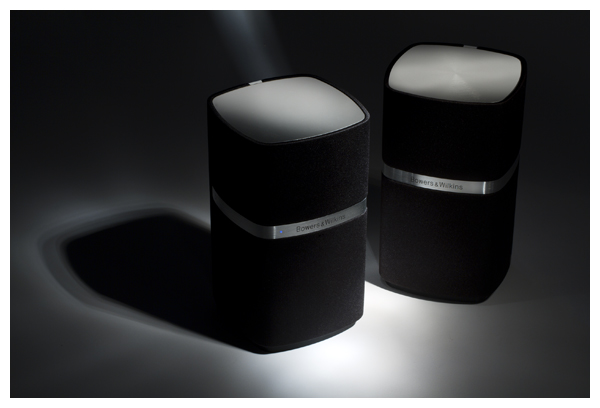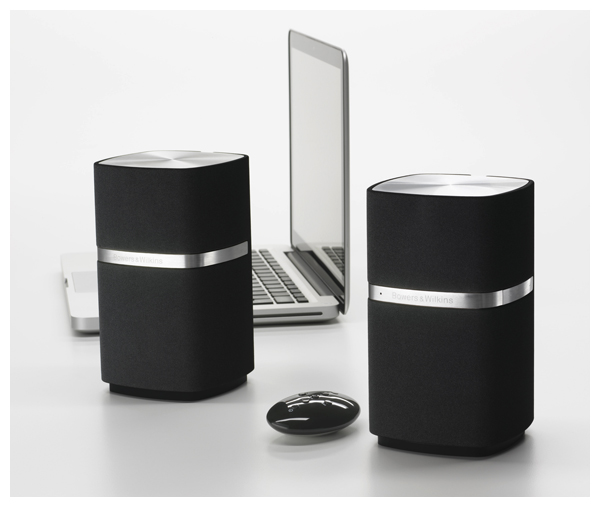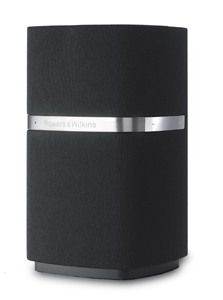 Is it a futuristic beer keg? A spare droid from Star Wars? A water conditioner? While it does look futuristic, this curious device is available today from your local SoundCast dealer—and it’s one of the most interesting portable music systems we’ve seen.
Is it a futuristic beer keg? A spare droid from Star Wars? A water conditioner? While it does look futuristic, this curious device is available today from your local SoundCast dealer—and it’s one of the most interesting portable music systems we’ve seen.
The OutCast is a single 26-inch tall cylinder with a slight taper in the midsection. The control panel is located on the top of the device. It lets users operate an iPod or iPhone, as well as iTunes, Pandora, and Rhapsody. The easy-grip handle, also on the top, has plenty of room for those with large hands, while the sealed function buttons should be impervious to prying hands and intoxicated neighbors.
Within the casing are four sections. The uppermost section holds the receiver unit and a 100-watt Class-D amplifier. The middle section contains four 3-inch drivers aligned in a right-left-right-left pattern that creates a 360-degree stereo output. The bottom section features a sealed chamber holding the 8-inch IMPP woofer, which, with its down-firing placement, allows for even bass dispersion. The bottom section has ports for the woofer and ambient blue lights, and also serves as a sturdy base. The OutCast’s heavy-duty design and external material limits exposure to the elements, while still letting the music be heard.
 Setting up the OutCast and installing its rechargeable nickel-metal hydride battery takes about five minutes, if you take the 90 seconds required to read the manual. Both the audio-input jack for non-iPod MP3 players and the power-cord socket are covered by a flexible but tight-sealing rubber gasket. The OutCast offers three 2.4-gHz channels, which are manually switchable, to prevent interference with other wireless devices.
Setting up the OutCast and installing its rechargeable nickel-metal hydride battery takes about five minutes, if you take the 90 seconds required to read the manual. Both the audio-input jack for non-iPod MP3 players and the power-cord socket are covered by a flexible but tight-sealing rubber gasket. The OutCast offers three 2.4-gHz channels, which are manually switchable, to prevent interference with other wireless devices.
A Perfect Partner
Placement of the OutCast is key to its performance. Getting the unit away from anything within at least five or six feet is critical for stereo performance. Then, once you’ve charged it overnight, you’re ready to rock.
Combining the iCast dock/transmitter (a $100 option) with an iPod Classic, the Outcast fills most backyards with quality-sounding music. Sell that boom box at your next yard sale, because the Outcast has serious low-end grunt. Its midrange punchiness combined with omnidirectional ambience redefines outdoor hi-fi. Blasting Adele’s 21, the OutCast easily carries her vocals to the end of my backyard, yet it wasn’t so loud as to send the neighbors into fits of rage.
 The conveniently placed handle makes light work of carrying the 25-pound OutCast around the yard or to a neighbor’s house. And it’s equally at home indoors as it is outdoors.
The conveniently placed handle makes light work of carrying the 25-pound OutCast around the yard or to a neighbor’s house. And it’s equally at home indoors as it is outdoors.
Better than a Rock
Unlike those outdoor speakers that look like rocks (but do not rock when called upon), both the OutCast and smaller OutCast Jr. (which starts at $600) deliver the goods, no matter what the volume. This is an all-purpose portable player with serious capability. Whether I was playing John Mellencamp or AC/DC, the sound was full and clear. At a recent outing, a few guests complimented the sound quality and wondered where the wires were—one of the OutCast’s most-noticeable perks.
The device claims a 300-foot range between it and the iCast wireless dock. It was still playing solidly at the edge of my 200-foot yard, but does drop off somewhat around corners. For best results, you’ll want to keep it within line of sight. Like a tuner car from The Fast and the Furious, the OutCast features blue mood lighting to increase its sci-fi feel.
Don’t be surprised if taking the OutCast or Outcast Jr. to your next party makes you the hit of the neighborhood.
SoundCast OutCast Portable Indoor/Outdoor Speaker System
MSRP: Starting at $900



 “Where’s the sub?” Those were the first words out of my mouth as I entered Danny Haikin’s office at B&W in London earlier this year. He just smiled and said, “There isn’t one. That’s just coming from the two desktop speakers.” Then we spent the better part of the next hour talking about music while I got a proper demo of B&W’s latest masterpiece, built upon the technology incorporated in its Zeppelin models.
“Where’s the sub?” Those were the first words out of my mouth as I entered Danny Haikin’s office at B&W in London earlier this year. He just smiled and said, “There isn’t one. That’s just coming from the two desktop speakers.” Then we spent the better part of the next hour talking about music while I got a proper demo of B&W’s latest masterpiece, built upon the technology incorporated in its Zeppelin models. Verifying Initial Observations
Verifying Initial Observations No Need to Fear High-End Sound
No Need to Fear High-End Sound










